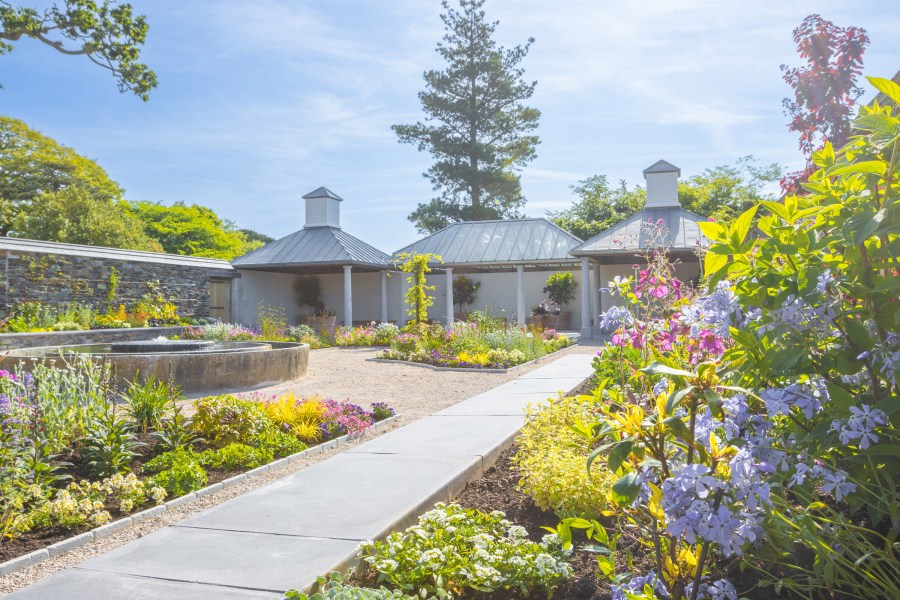SU CARROLL rounds up the very best activities to do and things to see close to the coastline in August
1. OIL ON WATER
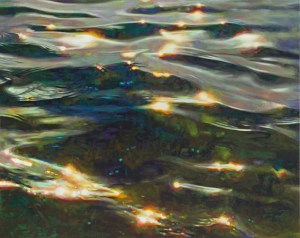
West Cornwall artist Nell Kerr’s new exhibition at Whitewater Contemporary in Polzeath uses traditional oil painting methods to capture the transient nature of water. Nell makes close cropped and emphatic studies of moving water, from crashing waves to the sparkling beauty of placid ripples. She details the simple magic of water as the light and movement change throughout the day and the seasons.
For inspiration, she heads out in her Canadian canoe to spend time on the water in and around Cornwall’s Helford River where she lives and works, gathering ideas and reference material for her paintings, such as Reverie (pictured), back in the studio. By focusing on small areas of bodies of water such as rivers and seas, and containing them within the boundaries of her canvas, Nell’s work expresses the limitless, infinite and fractal nature of her subject.
Nell has lived in many coastal places and grew up around water, due to her father’s job at sea. After Art Foundation studies at Plymouth College of Art and Design and a BA in Fine Art at Coventry University School of Art, she moved to Cornwall in 2004. Her work has been exhibited and is held in private collections here UK and abroad.
Ends August 31, whitewatercontemporary.co.uk
LOCALS LOVE
Polzeath is all about the beach – swimming, surfing, sunbathing and sandcastles. If you want an alternative though, head along the coast towards Trebetherick where the poet laureate, Sir John Betjeman, once lived. The writer of poems Slough, Summoned by Bells, and New Bats in Old Belfries, he found inspiration in later life in the beautiful coast and sea of this corner of Cornwall. VisitCornwall.com
2. WILD THINGS

Family adventure festival Gone Wild, which has proved to be such a hit at Powderham Castle in Devon for the past three years, is coming to Holkham Park on the north Norfolk coast for the first time.
There are over 100 free experiences include archery, abseiling, survival skills, axe and spear throwing, tree climbing, foraging walks, shelter construction, raft building, rock climbing, wild swimming and bug eating over four days. The festival was created by TV adventurer Bear Grylls and former Royal Marine Oli Mason who worked at Holkham before joining up. The festival has music, entertainment and wild experiences on land and on water.
“It’s always been our ambition to open a second UK site and I’m so excited to announce that Holkham Park will become our east of England home,” says Bear. “Just like Powderham Castle, it’s set in thousands of acres of parkland close to the coast, with deer, mighty oaks, a walled garden, and stunning views. It’s a perfect formula that allows us to provide amazing experiences on land and on water.”
The focus is on wild adventures and challenges, but there is time to party to the likes of Eurovision legend Sam Ryder (pictured) McFly and Scouting for Girls.
August 8-11, gonewildfestival.com
LOCALS LOVE
Holkham is a thriving rural estate built in the mid-18th century by Thomas Coke, 1st Earl of Leicester, with a magnificent Palladian Hall. There is a National Nature Reserve, deer park and access to the beach. The vision is to become the UK’s most pioneering and sustainable rural estate, caring for nature, landscape, and wildlife. A sustainability and conservation plan commits to pioneering environmental gain, low carbon living and stamping out waste. Holkham is also earnest and passionate about its role within the local community, by providing employment, homes, and support for local businesses and charities. holkham.co.uk
3. A LIFE IN POTS
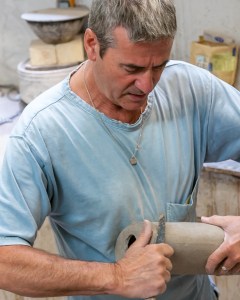
Celebrated studio potter John Bedding looks back on a lifetime of work in a new exhibition, 60 Years On, at the Leach Pottery in St Ives. John has created new works in his Illustrated Pot series: striking vase and bottle forms in high-fired earthenware paired with intricate surface decoration and richly built-up colour, resulting in pots with many layers of interest.
“The inspirational core for my work comes from a desire to explore the boundaries of shape and technique, rather than following the traditional reduced high fire pots of my training,” he says. “Many years at the Leach Pottery gave me a heightened awareness of shape and proportion, and the skills and discipline needed as a craftsman.”
John’s pottery career began in south London in 1964, moving to St Ives in 1967 where he eventually worked with Bernard Leach. After travels in France and Europe he returned to Cornwall and in 1978 became the second potter sent to Japan by the Leach Pottery. Part of the experience involved firing wood-fired kilns known dragon kilns because of the flames that roar from them in the firing’s climax.
John now works in the town’s Gaolyard Studios which he opened in 1998 as a place for potters and continues to experiment with a wide range of pottery styles and techniques.
Ends September 8, leachpottery.com
LOCALS LOVE
Attracted by the light, artists have been flocking to St Ives since the 1800s. Many household names made their homes here. People like sculptor Barbara Hepworth and her painter husband Ben Nicholson, Sir Terry Frost, Patrick Heron and Wilhelmina Barns-Graham. There are lots of art galleries in the town – from the prestigious Tate, overlooking Porthmeor Beach, and the Leach Pottery to small independent galleries and artists’ co-operatives like The Art Space Gallery on The Wharf which sells affordable art by seven local artists. Recommendations in the blog by locals David and Miranda on their website. stivesbythesea.co.uk
4. FRINGE BENEFITS
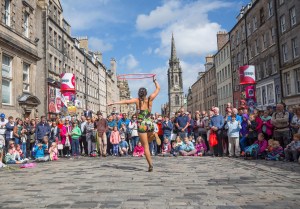
Edinburgh Fringe takes over the city for three weeks in August in an explosion of creative energy from around the globe. Artists and performers take to hundreds of stages all over the city, presenting shows for every taste. Venues can be anywhere, from existing theatres and concert halls to repurposed spaces like bars, parks, buses and shipping containers. The Fringe street events bring colour, excitement and vibrancy to outdoor areas, free of charge.
From big names in the world of entertainment to unknown artists looking to build their careers, the festival spans every genre of live performance, including theatre, comedy, dance, physical theatre, circus, cabaret, children’s shows, musicals, opera, music, spoken word, exhibitions and events.
This year’s Fringe programme has more than 1,590 shows so there really is something for everyone.
August 2-26, edfringe.com
LOCALS LOVE
Why have just one festival in August, when you can have several? There is the world-famous Royal Edinburgh Military Tattoo (August 2-24) with its spectacular performances. Led by the Royal Navy, this year’s show, Journeys, will celebrate nautical themes with contributors from Switzerland, India, Australia, Canada and America. The Edinburgh International Festival (August 2-25) focuses on music from classical to contemporary and all shades in between alongside opera, theatre and dance. The Edinburgh International Film Festival (August 15-21) is in its 77th year and includes the award of The Sean Connery Prize for Feature Filmmaking Excellence. Oh, and there’s the Edinburgh International Book Festival (August 10-26) and the Edinburgh Art Festival (August 9-25). visitscotland.com
5. COLOUR PALETTE
The Velarde Gallery in Kingsbridge, Devon, will be awash with colour this summer with bold and beautiful palettes in an exhibition of work by contemporary artists from Edinburgh to East Sussex, the coast of Northern Ireland and down to St Ives on the western edge of Cornwall.
Colour Stories includes the work of Scottish Printmaker Paul Furneaux who uses traditional Japanese woodblock printing techniques for creations such as Tokyo Spring (pictured). Paul, who studied the technique at Tama Art University in Tokyo, combines the controlled cutting typical of many Japanese printers with a more expressive style more commonly associated with woodcut in the west. His interest in the landscape and concerns for our environment are subtle but ongoing themes in his work.
Other artists on show here are Anthony Garratt with his experimental paintings of wild landscapes such as Dartmoor and the south west coastline; Dorset-based artist Michelle Griffiths who combines drawing, painting and printing to create brightly coloured compositions; Mark Godwin whose work is defined by a powerful use of colour and a talent for complex compositions, often on a large scale.
Ceramicist Sam Hall, who lives and works in St Ives, shows his non-functional ceramics which bring art and contemporary craft together and Belfast-born sculptor Patricia Volk explores the immediacy of clay for work she describes as “purely visual and non-intellectual”.
July 13-September 14, velarde.co.uk
LOCALS LOVE
Pretty Kingsbridge is a market town which dates back to 1219 and still has a lot of independent shops and lovely places to eat today. Close to the South West Coast Path and South Devon Area of Outstanding Natural Beauty, you’ll find lots of things to see from the community garden to a miniature railway. There’s a thriving community which supports lots of events throughout the town – Kingsbridge Fair Week in July, the Kingsbridge Show in September and Kingsbridge Celebrates Christmas in December.
6. TRACK RACE

The Talyllyn Railway was the first of the small railways to be rescued by a preservation society, and is now one of the Great Trains of Wales, running nearly ten miles between Nant Gwernol and Tywyn Wharf on the coast, part of which is a UNESCO World Heritage Site.
In summer super-fit, multi-terrain runners can Race the Train on its journey to Abergynolwyn and back. There are a variety of routes on a mixture of public roads, lanes, un-metalled roads, tracks, agricultural land, and rough grazing pastures. Some of the route can be quite steep. There’s also a Toddler’s Trot for children up to nine years old. Supporters can cheer on the runners from the comfort of the trains that follow the same route. It’s the 39th annual race, organised by Tywyn Rotary. racethetrain.com
LOCALS LOVE
At Tywyn Wharf station you can visit the Narrow Gauge Railway Museum which houses an important collection of artefacts relating to narrow gauge railways in the British Isles, throughout a period spanning some 200 years – everything from complete locomotives to signalling equipment and tickets. Children will love a section devoted to one of the early volunteers on the Talyllyn Railway, the Rev W.V. Awdry who created the Thomas the Tank Engine books. talyllyn.co.uk
7. SALUTING THE SEA
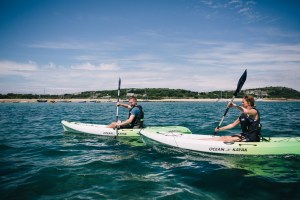
The Isles of Scilly, lying 28 miles off the coast of Cornwall, are surrounded by the Atlantic Ocean so where better to immerse yourself in nautical adventures and be ‘at sea’. This summer Visit Isles of Scilly launch their inaugural Ocean Scilly festival across all five inhabited islands and many of the uninhabited ones too.
The programme will be jam-packed with waterborne activities such as Paddle and Pizza, pedal boarding around the smallest island of St Agnes, sailing sessions, kayaking, boating, sea life safaris, coasteering around the rugged and wild landscapes, a range of gig rowing taster courses (the islands hold the World Pilot Gig Championships each May) and for the more sedate at heart, talks on shipwrecks, lighthouse heritage, seabirds and aquatic wildlife.
Visit Isles of Scilly have also partnered with the RNLI for talks surrounding their 200th anniversary, plus water-based demonstrations with the Lifeboat, with the finale of the Festival culminating in a whole weekend of SwimRuns hosted by Scilly60, with routes for all ages and abilities.
August 23-September 1, visitislesofscilly.com
LOCALS LOVE
The Abbey Garden on the island of Tresco was created in the 19th century around the ruins of a Benedictine Abbey. In this warm climate, some 2,000 specimens from across the southern hemisphere and subtropics are thriving. A host of succulents, towering palms, and giant, lipstick-red flame trees fringe the lush grid of paths that criss-cross the gardens. The wildlife love it here – watch red squirrels and golden pheasants meander by and discover echoes of island shipwrecks in the enchanting Valhalla Figurehead Museum. tresco.co.uk
8. COLD WAR COLLECTION
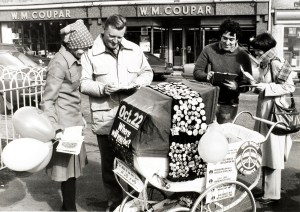
A new exhibition at the National Museum of Scotland will explore Scotland’s critical position on the frontline of the Cold War. Over 190 objects, many on display for the first time, will be brought together in Cold War Scotland to tell the stories of the Scots at the centre of this global conflict.
Scotland’s unique geography and topography provided a useful base for Allied military preparations and research during the Cold War, a 40-year nuclear stand-off between the USA and the Soviet Union following the end of the Second World War. Atomic power brought jobs and investment to some of the country’s most remote areas, but as global tensions mounted the threat of attack or nuclear disaster became part of everyday life. This exhibition will explore both the visible and invisible legacies of the war in Scotland.
It looks at Scotland’s rich history of Cold War-era protest and activism. First-hand accounts include a young mother who decorated her daughter’s pram with Campaign for Nuclear Disarmament (CND) badges (pictured). A rattle made from an old laundry detergent bottle emblazoned with the CND logo was given to her baby during the Peace Marches of the early 1980s and will go on display in the exhibition.
Ends January 26, nms.ac.uk
LOCALS LOVE
A short walk from the museum is the Talbot Rice Gallery, dedicated to exploring how the University of Edinburgh can contribute to contemporary art production today and into the future. A programme of exhibitions supports new emerging artists from Scotland and the gallery plays an active role in Edinburgh College of Art, working with students throughout the year, engaging them in the programme and curatorial vision. Open to all with free admission. trg.ed.ac.uk
9. TROPICAL TREBAH
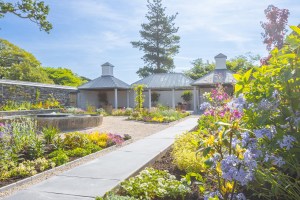
Beautiful Trebah Gardens – where the Helford River meets the sea – is celebrating the success of its year-old Court Garden, where the warm stone walling creates shelter for bananas in spring, and where a collection of rare and unusual succulents and vibrant displays in the borders all thrive. Built on the old tennis court, the garden is a sensory and accessible walled garden area on the approach to the visitor centre
The Court Garden is planted more formally than the main sub-tropical valley garden for which Trebah is renowned and is filled with locally-sourced plants, many of which have been grown on-site in Trebah’s nursery and are also available in their plant centre.
There’s a colourful, pollinator-friendly scheme in summer designed to showcase hot colours for the south facing beds and then a cooler colour palette for the north facing beds. As autumn and then winter settle in, more pockets of colour and fragrance appeared thanks to winter-flowering violas, scented dwarf wallflowers, hyacinths, narcissus and pretty forget-me-nots. trebahgarden.co.uk
LOCALS LOVE
The sub-tropical climate in this corner of Cornwall means you are spoiled for choice when it comes to gardens. Nearby Glendurgan Gardens, in the care of the National Trust, has three valleys packed with things to see. There’s a gigantic tulip tree, ponds teeming with wildlife, a boat seat, giant swing and a low-level hedge maze which was created in 1820 and is perfect for children. nationaltrust.org.uk
10. VIKING LIFE

Rare objects representing thousands of years of island life, from the Neolithic to the Viking Age, are on display in two new exhibitions on the Scottish Isle of Lewis. More than 40 artefacts are on loan from National Museums Scotland, including some displayed for the first time, at Comunn Eachdraidh Nis and the Kinloch Historical Society Museum.
The artefacts were discovered at sites across Lewis and include a unique, complete 2,500-year-old pot from Allt Cleascro, Achmore (pictured), found buried deep in peat, and an exceptionally rare example of pre-Viking Age Scandanavian craftsmanship. The intricately decorated bronze mount was converted into a buckle during the Viking period and worn on its journey to Scotland. Brought together for the first time the objects provide an insight into the island’s deep past, revealing how people have lived and thrived in this area for thousands of years.
The Achmore pot can be seen at the Kinloch Historical Society Museum alongside significant features within the local landscape such as Sidival Stone circle.
Ends March 2025, nesshistorical.co.uk
LOCALS LOVE
See how people on the Outer Hebrides lived at Gearrannan Blackhouse Village, a coastal crofting village in a secluded bay within the district of Carloway, on the west coast of the Isle of Lewis. A local trust has been restoring once derelict properties since 1989 to recreate an authentic settlement offering visitors modern facilities within the surroundings of times gone by. Traditional methods have been used to recreate the drystone masonry and thatched roofing of the original croft houses with the discreet integration of modern conveniences. gearrannan.com
COMING SOON
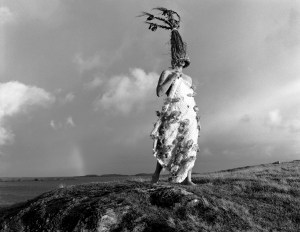
A fascinating collaboration between a Californian artist Peery Sloan and the crafting communities of Scotland is celebrated with an exhibition to mark Wool Week on the Shetland Islands this September.
The Language of Wool project and subsequent collections will form part of the first UK exhibition by Peery Sloane – Of Spirit, Of Power: The Vernacular of Energy which will move to The Briggait, Glasgow in October.
Multidisciplinary, site-responsive artist Peery spent last winter and early spring this year in Scotland, 5,000 miles away from her home in California, for the exhibition of textiles and photography. Her practice is based on traditional ‘women’s’ crafts such as weaving, beading, quilting, knitting and basketry, and considers the interplay between natural materials and social structures.
The exhibition will also include a collection of Peery’s hand knitted tapestries, and caps made by Shetland Knitters with motifs that Peery has designed relating to wind turbine farms and Scotland’s ongoing energy crisis. peerysloan.com

